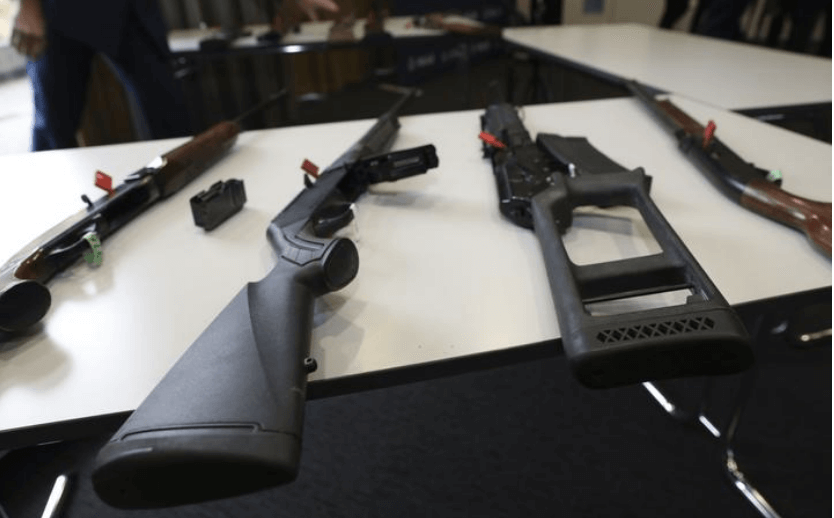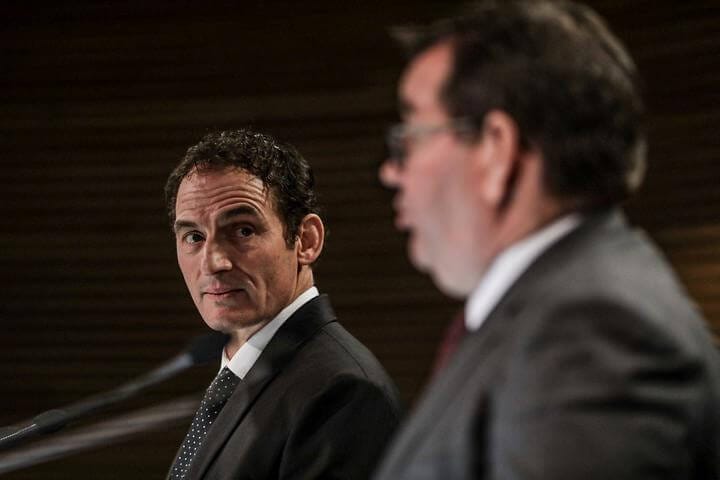The money the government will pay to gun owners handing in their newly-banned weapons won’t cover the full cost of the firearm.
Police Minister Stuart Nash and Finance Minister Grant Robertson announcing details of compensation for gun owners who hand in banned firearms.
The gun buyback scheme was already been allocated $150 million in the Budget, and that has now been boosted by an additional $40m from ACC.
Compensation announced by the government today fits into three categories – all based on a wholesale price for a new weapon, without any retail margin.
It will pay 95 percent of the base price for weapons in new or near-new condition, 70 percent for those in used condition and 25 percent for those in poor condition.
The base price is the gun’s value minus the profit margin put on a firearm when sold.
Compensation for prohibited parts and magazines will be 70 per cent of the base price for those in near new or used condition and 25 per cent for those in poor condition.
A selection of firearms which are now prohibited, on display to media at a police press conference

Overall, the buy-back price will reflect the brand, make and model of the prohibited firearm; its base price; and its condition.
As an indicative figure the government said the base price for centrefire semi-automatic rifles ranges from $1000 to $10,000. Most have a base price of less than $5000.
Shotguns are generally less than $5000.
As at 18 June, 672 firearms had been handed in; a further 4815 had been declared for surrender via the online form and are being stored by owners in the interim.
In addition, police have seized around 700 firearms during the ordinary course of policing since March.
The Regulatory Impact Assessment (RIA) prepared by police for ministers shows there is significant uncertainty about total costs.
The buy-back starts today and runs for six months to 20 December. The amnesty to surrender firearms, parts, magazines and ammunition runs until the same date.
Compensation will only be paid to those gunowners with a valid firearms licence. Compensation for prohibited parts and magazines will not require a valid licence
A new option means the Crown will stump up to $300 for gun owners to have some prohibited firearms modified by approved gunsmiths to make them lawful.
Owners of unique or rare prohibited items may also apply for compensation.
The change to gun laws banning military style semi-automatic firearms, magazines and parts that can be used to assemble prohibited firearms was in response to the Christchurch terror attacks in which 51 people were killed.
“The buy-back and amnesty has one objective: to remove the most dangerous weapons from circulation following the loss of life at Al-Noor and Linwood mosques on 15 March,” Police Minister Stuart Nash said.
“The compensation scheme recognises licensed firearms owners are now in possession of prohibited items through no fault of their own, but because of a law passed by almost the entire Parliament.”
Finance Minister Grant Robertson said the $150m already set aside for the scheme was based on officials’ initial advice.
“The ACC Board has also agreed to allocate $40 million in recognition the buy-back scheme is likely to contribute to a reduction in the severity and incidence of injuries from the prohibited firearms,” he said.
“There is high uncertainty around any costings, owing to the lack of information on the number of prohibited items, their type and condition. Better information will be forthcoming once the buy-back is underway and volumes and conditions of firearms are clearer. As I stated on Budget day, if we need to top up the funding we will.”
Mr Nash said the approach to prices balanced fair compensation for people’s firearms and a fair cost for the tax payer. “Police sought independent advice from KPMG to develop the price list. KPMG consulted farmers, hunters, dealers, auctioneers and gun clubs.”
Source: rnz.co.nz republished by arrangement.

